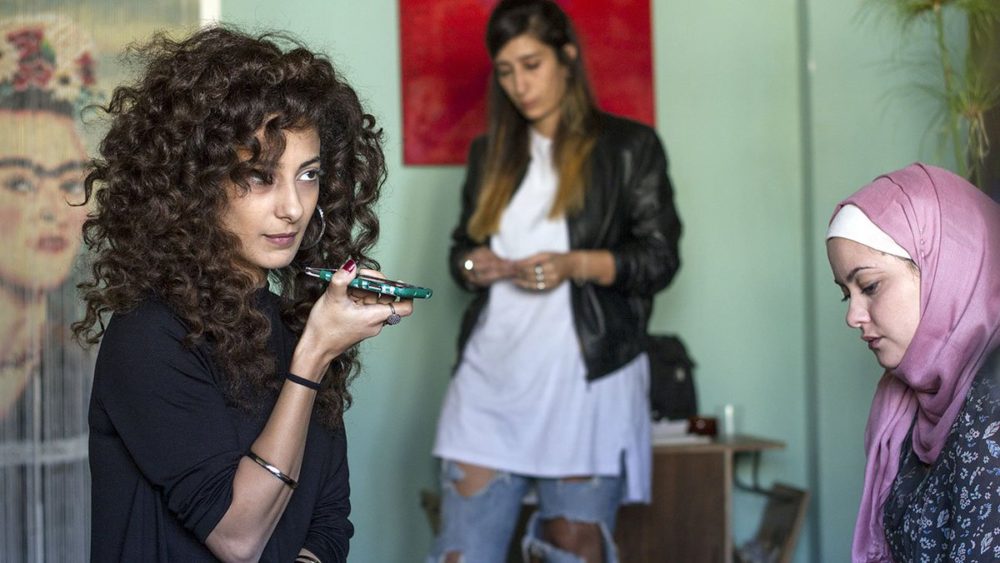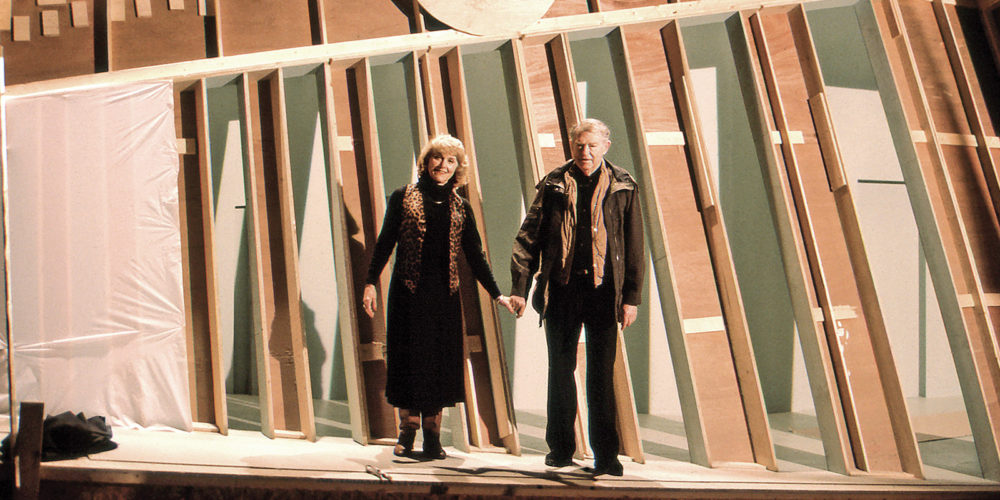Harold and Lillian: A Hollywood Love Story (Daniel Raim, 2016)
Harold and Lillian: A Hollywood Love Story is both a tale of two individuals falling in love and keeping a marriage together and an exploration of two careers that aren’t often showcased on film: storyboarding and film research. Director Daniel Raim, whose former work has been focused on production designers (notably Robert Boyle, among others), uses the film as a love letter to Lillian Michelson and Harold Michelson, a couple whose contributions to film are likely unknown by most, but essential to the works they helped create.
What Raim does best, and often, is showcase Harold’s drawings alongside scenes from popular films, ranging from Hitchcock’s The Birds and Marnie to Mike Nichols’ The Graduate, which gets an incredibly in depth analysis. This effectively makes a case for storyboarding as one of the most essential facets of filmmaking. His tales of working with filmmakers and cinematographers range from being hidden from sight to working hand in hand with them. But more than that, it makes a case for preserving the pieces of art that Harold contributed to films. If nothing else, Harold and Lillian should result in a museum exhibit or a series of books that feature the man’s contributions to cinema for over half a century.
Where footage of Harold, who passed away years ago, is more focused on the work, Lillian is the one who grounds the documentary with her discussion that flips between familial life and film researching as a career. She fuels this movie with her sheer enthusiasm for, well, everything; her dedication to authenticity, anecdotes of her work as a film researcher (including David Lynch being the only one who took the time to put books back in the right place), and frank discussions about her family, from her husband’s short-lived alcoholism to her autistic son (and how Rain Man ties back to their family). Anyone could listen to her talk about pretty much anything for hours and, for 93 breezy minutes, you get a whole lot of that.
Raim takes interviews with the leading couple and experts in the industry–actors, directors, production designers, storyboard artists, and even critics–and mixes them with a mountain of archival footage, as well as lovely little storyboards of Harold and Lillian’s life to complement the charming narrative being laid out.
Directed by Daniel Raim; starring Lillian Michelson, Harold Michelson, Danny DeVito, Mel Brooks. and Francis Ford Coppola; 94 minutes.
—

In Between (Maysaloun Hamoud, 2016)
A frank and beautiful exploration of what being a woman means in present day Tel Aviv, sifting between comedy and drama with a natural movement that most debut feature filmmakers can’t nail. Queerness, sexual assault, and dismantling tradition all come into play and it’s a heavier movie than some might expect from a poster as seemingly innocuous and amusing as the one it totes. What’s most interesting is the way Maysaloun Hamoud makes a cool commentary on the way liberalism is a facade; a seemingly accepting and progressive family turning their back on a queer child and a man who seems open to what a modern woman is like still insisting on his significant other changing to fit tradition.
But it also tackles conservative hypocrisy with as much depth; the holiest individuals can be those who commit the worst crimes. The camera practically always keeps the women, or their gazes, as the focal point and the way Hamoud maintains these medium shots of the protagonists in situations where men are trying to impose their will upon them, rendering the men often faceless except for the object of imposition (a hand that delivered a beating, a bare ass and nothing more after an assault) is really fascinating.
Tension never lasts long though, as the film isn’t interested in making itself a thriller; even the way it approaches and leads up to confrontation at times proves amusing. If anything, her approach to depicting Lalia (Mouna Hawa), Salma (Sana Jammelieh), and Nur (Shaden Kanboura) is utterly casual, showing them smoking, dancing, cooking, studying, and a number of other things, without an ounce of judgment in what they do or don’t do. The judgment is reserved for those who oppose the notion of these women being anything other than what they themselves choose to be.
In Between will no doubt raise comparisons to American shows more than American films–Girls has already popped up more than once–and it’s a clear signal that there’s so much more to Hamoud’s film than what one might expect from face value or lazy comparisons. It moves through time pretty quickly, relationships shifting faster due to time restraints that a television series would clearly alleviate. And if the film’s sole issue is that it’s characters are so rich already that a series would allow them to be explored further, that’s something to celebrate.
Directed by Maysaloun Hamoud; written by Maysaloun Hamoud; starring Mouna Hawa, Shaden Kanboura, Sana Jammelieh; 96 minutes.




 Derek
Derek
 Isabelle
Isabelle